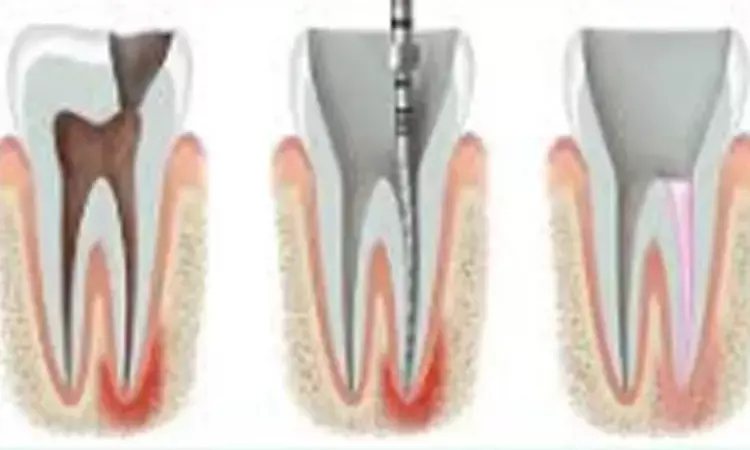- Home
- Medical news & Guidelines
- Anesthesiology
- Cardiology and CTVS
- Critical Care
- Dentistry
- Dermatology
- Diabetes and Endocrinology
- ENT
- Gastroenterology
- Medicine
- Nephrology
- Neurology
- Obstretics-Gynaecology
- Oncology
- Ophthalmology
- Orthopaedics
- Pediatrics-Neonatology
- Psychiatry
- Pulmonology
- Radiology
- Surgery
- Urology
- Laboratory Medicine
- Diet
- Nursing
- Paramedical
- Physiotherapy
- Health news
- Fact Check
- Bone Health Fact Check
- Brain Health Fact Check
- Cancer Related Fact Check
- Child Care Fact Check
- Dental and oral health fact check
- Diabetes and metabolic health fact check
- Diet and Nutrition Fact Check
- Eye and ENT Care Fact Check
- Fitness fact check
- Gut health fact check
- Heart health fact check
- Kidney health fact check
- Medical education fact check
- Men's health fact check
- Respiratory fact check
- Skin and hair care fact check
- Vaccine and Immunization fact check
- Women's health fact check
- AYUSH
- State News
- Andaman and Nicobar Islands
- Andhra Pradesh
- Arunachal Pradesh
- Assam
- Bihar
- Chandigarh
- Chattisgarh
- Dadra and Nagar Haveli
- Daman and Diu
- Delhi
- Goa
- Gujarat
- Haryana
- Himachal Pradesh
- Jammu & Kashmir
- Jharkhand
- Karnataka
- Kerala
- Ladakh
- Lakshadweep
- Madhya Pradesh
- Maharashtra
- Manipur
- Meghalaya
- Mizoram
- Nagaland
- Odisha
- Puducherry
- Punjab
- Rajasthan
- Sikkim
- Tamil Nadu
- Telangana
- Tripura
- Uttar Pradesh
- Uttrakhand
- West Bengal
- Medical Education
- Industry
Photon-initiated photoacoustic streaming removes bacteria in root canals with small diameter, taper

According to a recent research, it has been observed that compared with conventional needle irrigation (CNI), the photon-initiated photoacoustic streaming (PIPS) has greater ability to remove bacteria in root canals with a small preparation diameter and a small taper.
The study is published in the BMC Oral Health Journal.
Cheng Wen and colleagues from the Department of Endodontics, Affiliated Stomatology Hospital of Guangzhou Medical University, Guangzhou Key Laboratory of Basic and Applied Research of Oral Regenerative Medical, Guangdong, China carried out the present study to compare the use of photon-initiated photoacoustic streaming (PIPS) and conventional needle irrigation (CNI) in conjunction with different concentrations of sodium hypochlorite (NaOCl) to remove Enterococcus faecalis (E. faecalis) suspended bacteria and biofilms from root canal systems with different diameters or tapers.
Artificial root canal samples (n = 480) were randomly divided into three groups (n = 160/group). The canals were prepared to fit file sizes #10/.02, #25/.02, or #25/.06. The size #10/.02 group was incubated for seven days.
The size #25/.02 or #25/.06 group was incubated for 2 days. A stable biological model of E. faecalis infection was established. The root canals were washed with distilled water or with 1%, 2%, or 5.25% NaOCl combined with CNI or PIPS.
Bacterial suspensions and biofilms were assessed using an ATP assay kit and fluorescence microscopy. Image-Pro Plus was used to analyse the average fluorescence intensity to determine the most suitable root canal irrigation solution.
The following findings were highlighted-
a. In the CNI and PIPS groups, the ATP value of the 5.25% NaOCl subgroup was the lowest, followed by that of the 2% and 1% NaOCl subgroups.
b. The ATP value of the distilled water subgroup was the highest (P < 0.05).
c. When the root canal taper was 0.02, the ATP value of the #10/.02 + PIPS group was significantly lower than that of the #25/.02 + CNI group (P < 0.05).
d. The average fluorescence intensity of the #10/.02 + PIPS group was lower than that of the #25/.02 + CNI group (P < 0.05).
e. When the apical diameter was #25, the ATP value of the 0.02 taper in the PIPS group was lower than that of the 0.06 taper in the CNI group (P < 0.05), and the average fluorescence intensity of the 0.02 taper + PIPS group was lower than that of the 0.06 taper + CNI group (P < 0.05).
f. PIPS combined with 2% and 5.25% NaOCl effectively improved the long-term antibacterial effect after irrigation and re-culture for 6 h.
Hence, the authors concluded that "compared with CNI, PIPS has greater ability to remove bacteria in root canals with a small preparation diameter and a small taper. PIPS with 2% and 5.25% NaOCl exhibited superior antibacterial and bacteriostatic effects."
Dr. Nandita Mohan is a practicing pediatric dentist with more than 5 years of clinical work experience. Along with this, she is equally interested in keeping herself up to date about the latest developments in the field of medicine and dentistry which is the driving force for her to be in association with Medical Dialogues. She also has her name attached with many publications; both national and international. She has pursued her BDS from Rajiv Gandhi University of Health Sciences, Bangalore and later went to enter her dream specialty (MDS) in the Department of Pedodontics and Preventive Dentistry from Pt. B.D. Sharma University of Health Sciences. Through all the years of experience, her core interest in learning something new has never stopped. She can be contacted at editorial@medicaldialogues.in. Contact no. 011-43720751
Dr Kamal Kant Kohli-MBBS, DTCD- a chest specialist with more than 30 years of practice and a flair for writing clinical articles, Dr Kamal Kant Kohli joined Medical Dialogues as a Chief Editor of Medical News. Besides writing articles, as an editor, he proofreads and verifies all the medical content published on Medical Dialogues including those coming from journals, studies,medical conferences,guidelines etc. Email: drkohli@medicaldialogues.in. Contact no. 011-43720751


